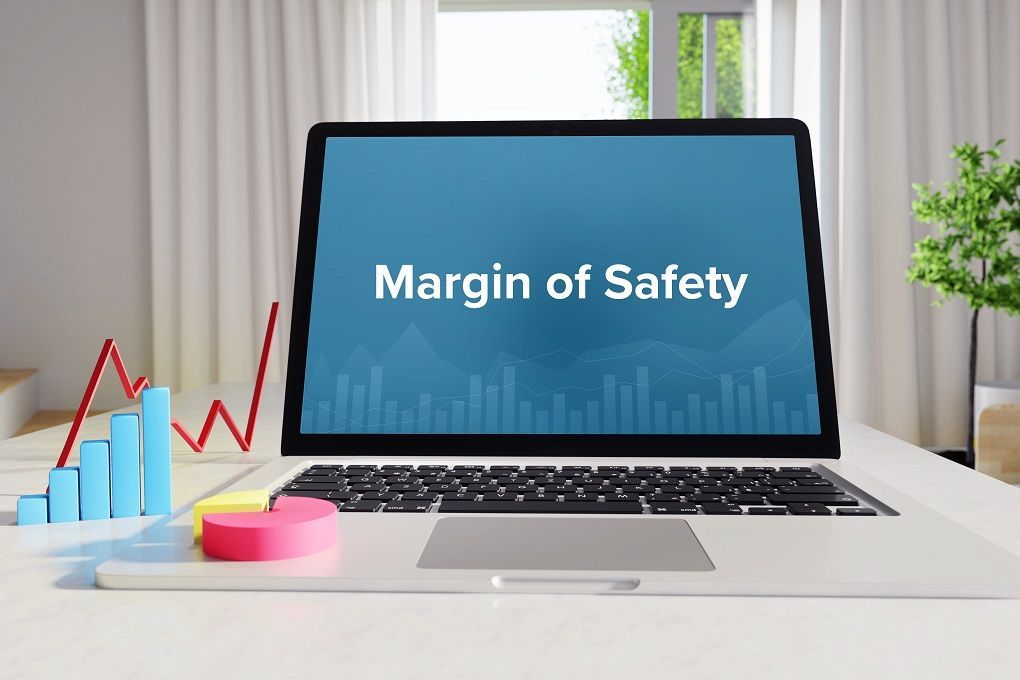Margin of Safety
An investment principle where the investor buys stocks when the market price is below their actual value
What is the Margin of Safety?
The margin of safety is an investment principle where the investor buys stocks when the market price is below their actual value. It is evaluated as the change between the price of a financial instrument and its basic value. The margin of safety acts as a built-in cushion that allows a few losses to be incurred but protects against major losses. Investors incorporate both qualitative and quantitative techniques to determine a safety margin that will discount the price target.

The concept is to avoid an investment scenario where there is little to gain and more to lose. The investor needs to keep cash reserves to cushion themselves against revenue falls and unexpected expenses. The management should develop several sources of income and make realistic forecasts by calculating the cost and risk before investing.
Summary
- The margin of safety is an investment principle where the investor buys stocks when the market price is below their actual value.
- Investors may set their margin of safety according to the level of risk.
- Buying securities during a margin of safety cushions the investor against downside risk.
Understanding Margin of Safety
Investors working with a margin of safety will utilize factors such as company management, market performance, governance, earnings, and assets to determine the stock’s intrinsic value. The actual market price is then used as a comparison point to calculate the margin safety.
For example, Warren Buffet, an investor who uses the margin of safety strategy, applies a maximum of 50% discount on the intrinsic value of a stock as a price target.
Uses in Investing
Apart from protecting against possible losses, the margin of safety can boost returns for specific investments. For example, when an investor purchases an undervalued stock, the stock’s market price may eventually go up, hence earning the investor a significantly higher return.
An investor may apply the margin of safety to determine the company’s share price with its current market price and use the variance as a basis for buying securities. It means that there is remarkable upward potential for the stock prices.
The margin of safety cushions the investor from an inaccurate market downturn. Before an investor buys a stock at an undervalued price, it is important to determine the intrinsic value of a stock. Such an analysis can be done by calculating estimates based on the company’s historical growth trends and future projections that may affect growth rates.
The results projected through forecasting may often be higher than the current results. The margin of safety will have little value regarding production and sales since the company already knows whether or not it is generating profits. However, it has value in the decision-making process, where it is being used as a tool for averting risk.
Uses in Business
In business, the margin of safety is the variation between the break-even sales and the actual sales. The margin of safety may be used to inform the company’s management about an existing cushion before it becomes unprofitable. For example, a company’s sales stand at 4,000 units currently. The break-even point estimation is 3,800 units. Therefore, the margin of safety will be 200 units.
Generally, the margin of safety concept can be used to trigger significant action towards reducing expenses, especially when a sales contract is at risk of decline. However, a huge margin of safety may protect the business from possible sales variations.
Uses in Budgeting
In budgeting, the margin of safety is the total change between the sales output and the estimated sales decline before the company becomes redundant. It alerts the management against the risk of a loss that is about to happen. A lower margin of safety may force the company to cut budgeted expenditure. Generally, a high margin of safety assures protection from sales variations.
Sufficient Margin of Safety
Based on the investor’s preference, the size of the margin of safety will vary according to the following types of investments:
Deep Value Investment
The deep value investment method refers to purchasing stock in a critically undervalued market. The idea is to locate mismatches between the intrinsic value of stock and the current stock prices. Therefore, deep value investing requires experienced investors with a huge margin of safety.
Growth at a Reasonable Price Investment (GARP)
The growth at a reasonable price investment method applies a more balanced investment approach. The investor picks companies with positive growth trends and those trading below intrinsic fair value. The investor needs to have at least a 10% margin of safety before trading with the GARP approach.
Importance of Margin of Safety
A high margin of safety is often preferred since it indicates optimum performance and the ability of a business to cushion against market volatility. However, a low margin of safety may indicate unstable business standing and must be enhanced by increasing the sales volume. It will cushion the investors against errors and poor decisions.
Additional Resources
CFI is the official provider of the global Capital Markets & Securities Analyst (CMSA)® certification program, designed to help anyone become a world-class financial analyst. To keep advancing your career, the additional CFI resources below will be useful: